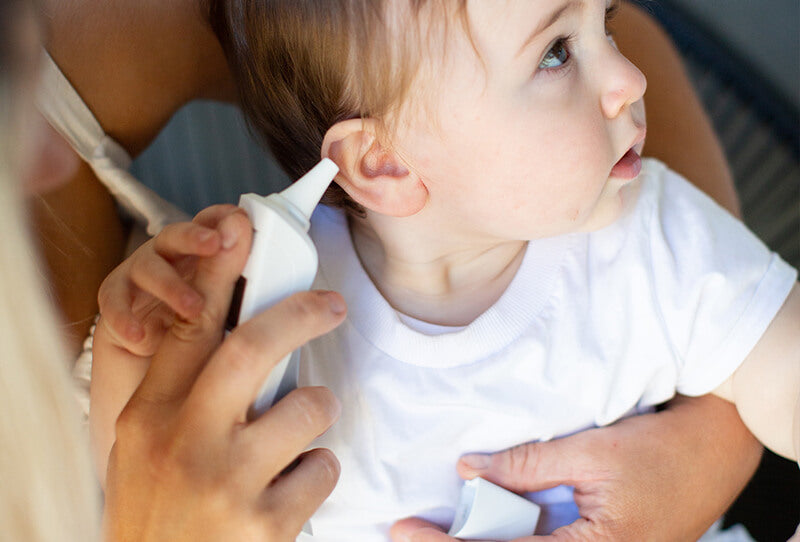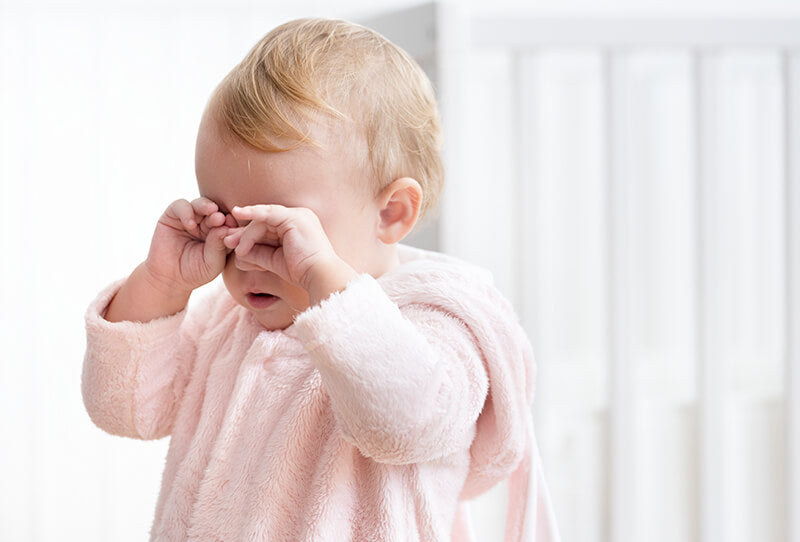My Baby Has A Fever – Tips And Advice

On this Page:
- My baby has a fever, so what do I do now?
- What is a fever?
- Use the Right Thermometer
- Know when to call the doctor
- Give Baby a Sponge Bath
- Consider Medication
- Keep Baby Hydrated
- How can I tell if my baby’s fever is serious?
My baby has a fever, so what do I do now?
It’s a parents natural instinct to worry when baby’s temperature rises and a fever occurs. However it’s quite rare for a fever to cause harm as it is the body’s natural defence against infection. Many infants develop fever even just for minor infections. But nonetheless, whether it’s a mild fever or not, you should consult a doctor, and that's why you need a good baby thermometer.
The American Academy of Pediatrics categorizes normal baby temperature between about 36 to 38ºC. But the actual temperature isn’t the only indicator of infant fever. A baby’s age could also be a gauge of whether a fever exists.
What is a fever?
A fever isn’t an illness in itself. However, a fever usually indicates that the body is fighting an infection. If your baby has a fever, in most instances it means he or she has caught a cold or some other viral or bacterial infection. A recent vaccination could also cause mild fever.
Here are some tips on how to handle baby’s fever:
Use the right thermometer
Most parents are now inclined to invest in an ear and forehead thermometer. These are the easiest and most versatile among digital thermometers available on the market. Thermometers are one of the most important tools you need when it comes to your baby’s health. Being able to take your baby’s temperature quickly and reliably are the most important functions of a thermometer.
Aussie brands like Cherub Baby make thermometers that can do both in a variety of ways.
A 4 in 1 Digital Ear and Forehead Thermometer can take accurate and speedy readings from the forehead, ear and the ambient environment whilst displaying a warning if the reading is above 38ºC. This fever alert function is important especially for parents who are not used to memorizing normal body temperature. If you find the forehead reading is a concern, your can cross check the reading with a reading in the ear (with the Cherub Baby ear and forehead model).
Cherub Baby's Touchless Forehead Thermometer is perfect for wriggly and unsettled babies as it provides a fast and accurate reading. This multi-functional thermometer will also take the temperature of the bath, baby bottles and even your baby's bedroom.
Choosing a reliable baby thermometer should also pass the criteria of accuracy, be of hospital grade, compact and with a warranty for that extra piece of mind. When taking a temperature with a digital thermometer always take multiple readings one after the other. We suggest at least 5 times to get a good average. To do this be sure to purchase a thermometer that can take a reading fast and easily.

Know when to call the doctor
If your baby is under 3 months old, a sudden rise in temperature is normal but requires immediate action.
If you find your babies temperature is 38ºC or higher make sure you contact your doctor without delay.
Inform the doctor that your baby is less than three months old. At this fragile age, babies are easily affected by bacterial and viral infection. Sometimes, a spinal tap is done to determine if meningitis is causing the fever. Your doctor may take blood and urine tests to determine whether there’s a bacterial infection. Aside from fever, pay attention to other symptoms that will help doctors immediately diagnose what ailments your child may have. Other symptoms include loss of appetite, cough earache, unusual fussiness, vomiting or diarrhea.
Give baby a sponge bath
Sometimes, giving lukewarm sponge baths could help bring your baby’s temperature back to normal. It also helps a lot in removing baby’s fussiness. Get a basin with lukewarm water and give him or her a bath. You may also wet a baby towel with lukewarm water and softly rub your baby’s skin especially in the forehead, arms and feet to lower down the heat.
Consider medication
If a sponge bath does not work, you might want to consider fever medication. If baby is below six months, doctors often recommend acetaminophen rather than ibuprofen. For those above six months, most babies can take either acetaminophen or ibuprofen. Consult your local pharmacist who will advise on the various options currently available.
NB: The dosage of these fever syrups and medicines are always determined by weight and not a baby’s age.

Keep baby hydrated
Also, it's very important to give baby enough fluids to avoid dehydration. Babies should also get enough water or breast milk, formula or an electrolyte solution depending on baby’s age. Common signs of a dehydrated baby may include fewer wet diapers, no tears when crying or a dry mouth.
Dress your baby in a light layer of clothes.
While others think that putting that extra layer of clothing and beddings could help lower down the fever at home, it does not guarantee that the temperature will subside anytime soon. Placing several layers of clothing or beddings might even increase temperatures in children most especially infants as babies are often fragile to handle.
How can I tell if my baby’s fever is serious?
Lookout for more than one symptom. If you find your baby has both a fever and other symptoms, such as vomiting, it may be a sign of a more serious illness.
Some other symptoms to look out for include:
- A rash;
- The baby does not want to drink for more than 8 hours or is drinking much less than usual;
- Signs of dehydration a mentioned above;
- The baby is more sleepy and drowsy than normal.
These are just some examples. However, your intuition and understanding of your baby will give you the best insight to know if something is wrong. If you are worried about the situation always see your GP.
References:
How to Safely Bring Down a Fever in a Baby – Healthline
Fever in children – Health Direct




